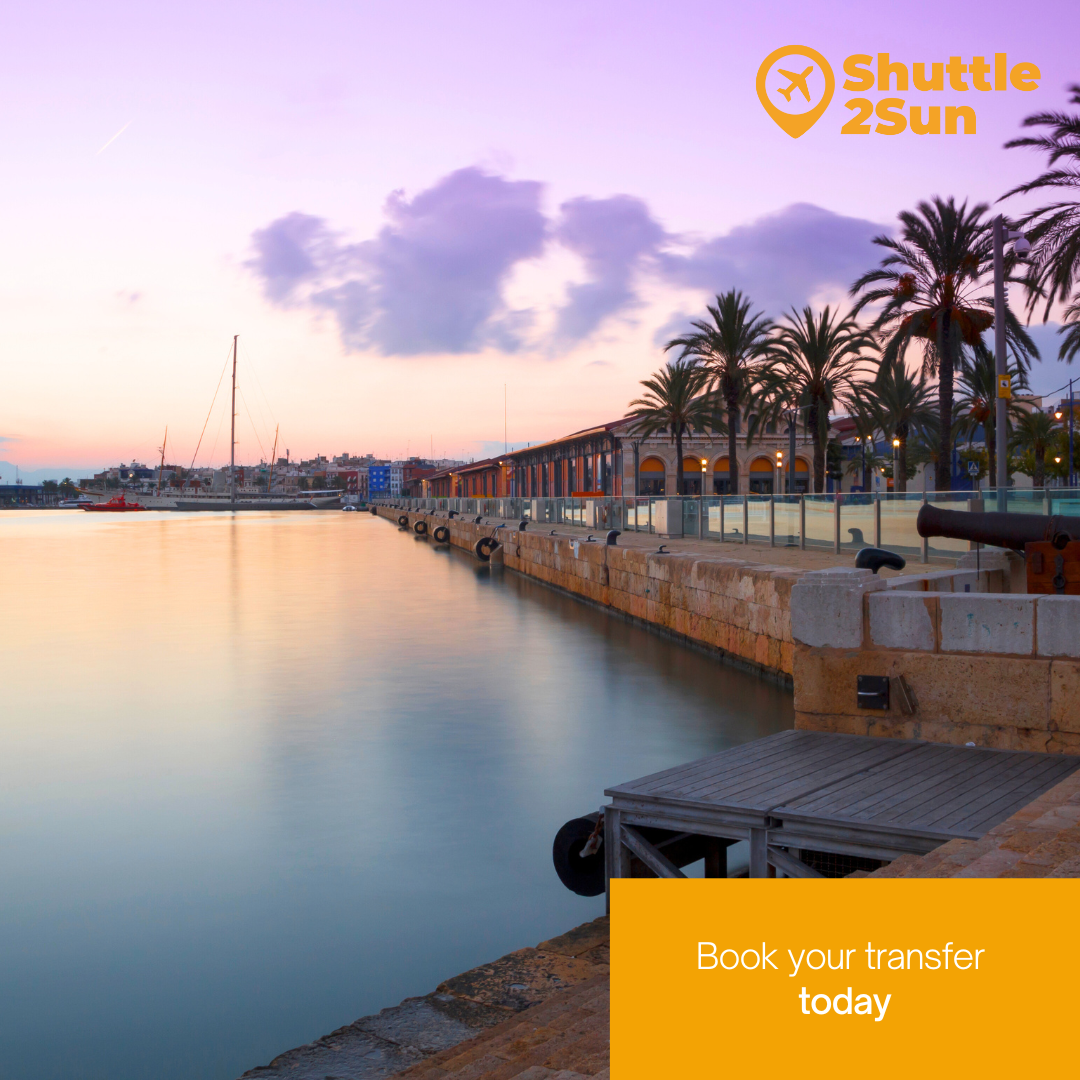Costa Dorada is one of the coastal areas of Catalonia, bathed by the Mediterranean Sea, which tourists love to visit, especially during the summer months. One of the key points of connection for maritime transport is the Port of Tarragona, which manages to position the city of Tarragona on the cruise ship map, while at the same time becoming an essential infrastructure for transporting goods in and out of Spain. That is why, if you travel to Costa Dorada, you cannot miss the Port of Tarragona.
Moreover, in Shuttle2Sun we offer private transfer services and shared transfer services, low-cost and sustainable, from Barcelona Airport, Reus Airport, Barcelona Port, Girona Airport and the AVE train station Camp de Tarragona, so you can move, comfortably, to any place of Costa Dorada or Tarragona.
History
The city of Tarragona, formerly known as Tarraco, has always been a strategic point, from a topographical point of view, due to its good location, by the sea, next to the mouth of the Francolí river, and its good communication with the Ebro valley. The Romans had already built, in their time, a dyke where they constructed a tower-lighthouse, which would help sailors to reach port. It was at that time that the city began to grow and decided to convert its port into a large market for agricultural products, as well as merchandise from Italy and North Africa.
It was not until the 12th century that the city of Tarragona began to work to offer a high-quality port, which would also provide benefits because of the numerous transactions that took place there. In 1484, King Ferdinand the Catholic allowed the construction of a dock, an execution that was delayed due to various conflicts that arosed, such as international wars, the increase in piracy and the Reapers’ War, which caused the alternation of the commercial power between Tarragona and the natural port of Salou, which had also gained importance at that time.
Finally, in 1790, the reconstruction of the Port of Tarragona was officially inaugurated. At the end of the 19th century, the Moll de Costa, the Parallel to the Moll de Costa and the works on the Levante, West and Transversal docks were built, thus ensuring that in the 20th century Tarragona had an artificial port of excellent quality.

From the 1960s, with the construction of the petrochemical industry, pontoons were installed for the loading and unloading of oil products and new access roads, such as the Eix Transversal.
Moll de Costa
The Port of Tarragona is committed to culture and leisure activities aimed at the people of Tarragona and the surrounding area, as well as visitors. This is why it created the Moll de Costa, a space dedicated to this, which includes various sheds for events and exhibitions; the Port Museum, which aims to exhibit the port’s heritage collection; and the Blue Observatory, a multi-sensory space for learning about the Mediterranean seabed. It also includes the Port Archive, the publications service, the Teatret del Serrallo and the Art Fund.
It is worth mentioning that you can also follow, on foot or by bicycle, the Heritage Route of the Port of Tarragona, which consists of following a series of information panels on elements of the port’s heritage, from the Port Museum to the Banya Lighthouse.
If you want to get to know the port of Tarragona, Shuttle2Sun offers its private transfer services and shared transfer services so you can travel to the city from Barcelona Airport, Reus Airport, Barcelona Port, Girona Airport and the AVE Camp de Tarragona train station.

Port Footbridge
From the city centre of Tarragona, you can reach the port quickly and easily thanks to the 300-metre-long Port Footbridge, which is integrated into the surroundings and connects the city with the sea. It is a space exclusively for pedestrians, which does not allow access to vehicles or personal mobility vehicles, such as bicycles or scooters. In addition, for people with reduced mobility, the route incorporates two lifts and a ramp to improve accessibility.
Miracle Promenade
You can also stroll along the Miracle Promenade, which is 650 metres long and fully accessible, next to the sea, so that you can enjoy the breeze and the magnificent views, from dawn to dusk. This is the continuation of the Port Footbridge, thus connecting the city with the seafront.
Along this walk, you will find a wide variety of plants, shrubs and trees, 35 different species, all native to the Mediterranean region, adapted to the climate. You can also cycle along it, thanks to the large 1,900 m² cycle path.
Kilometre 0
If you love sport, don’t forget to visit Kilometre 0, a space exclusively for pedestrians, which allows you to walk and do sport all along the Tarragona coastline. It includes signposting points every 250 metres; separate lanes for cyclists, skaters and runners; and a rest area with a fountain and emergency telephone.
El Serrallo, a Marine Village
Finally, to complete your visit, you can discover the Serrallo neighbourhood, in front of the port, an area of Tarragona with a magnificent range of restaurants, gastronomy and culture, which, from its beginnings, has lived off fishing, due to its location by the sea. You will be able to taste the best typical dishes of traditional cuisine, with excellent quality fish and seafood. This neighbourhood has been considered a Marine Village by the Catalan Tourism Agency.
Shuttle2Sun offers its private transfer services and shared transfer services, low-cost and sustainable, from Barcelona Airport, Reus Airport, Barcelona Port, Girona Airport and the AVE Camp de Tarragona train station, so you can move, comfortably, to Tarragona or surroundings.



